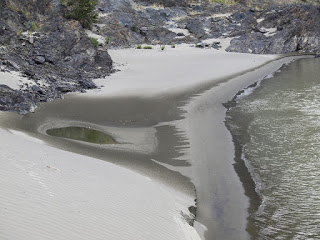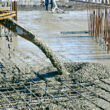Liquefaction produces so many drastic effects and damages to the structures and foundations build over its effected soil. The buildings and structures whose foundations are on soil affected by liquefaction will experience a sudden loss of support which will result in drastic and irregular settlement of the building causing cracking of foundations and damage to the building structure itself.
One of a very common phenomenon observed after liquefaction of soil at shallow depth during an earthquake is called sand boil.
Sand Boils or Sand volcanoes basically occur when water under pressure wells up through a bed of sand. The water looks like it is “boiling” up from the bed of sand. They usually occur during a floor or an earthquake as a result of liquefaction as already explained.
One example of soil boil is during an earthquake of 1989 in San Francisco, when sand boils brought up debris as a result of liquefaction.
A large number of sand fountains were observed during the Dhubri Earthquake in Assam in 1934 and also in Earthquake of 2001 in Gujrat.
Liquefaction of soil is responsible for many failures of earth structures slopes, foundations. It may also lead to land slides, lateral spreads, sinking of structures and flotation of underground structures.
















